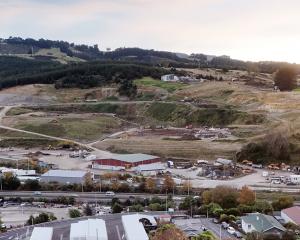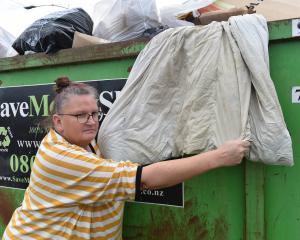Mrs Stevens' view has received support from two of New Zealand's public law experts.
The draft business plan, prepared over the past three years by the Ministry of Justice and delivered to Justice Minister Amy Adams last month, details the work the ministry considers necessary to make the 1902 building safe.
Mrs Adams said in a statement earlier this month the business case detailed more than $15million of spending that was needed for the required work.
Earlier plans showed the work was initially priced at $2.5million.
To help understand the wildly different figures, both the Otago Daily Times and Mrs Stevens requested a copy of the draft business plan.
The minister's office refused both requests, and yesterday said it had ''nothing further to add to the reasons already provided in the response to the request''.
Mrs Stevens said that simply was not good enough, as ''scrutiny of decision-making underpins a democracy''.
''[Zimbabwean President Robert] Mugabe doesn't have an Official Information Act. You can't have accountability without transparency.''
Mrs Stevens said recent ODT coverage of Dunedin construction, engineering and heritage experts rubbishing the $15million price tag showed how important scrutiny was.
''The fact is all the experts that we've had look at it say that cost has to be out of this world.''
Mrs Stevens said she understood some of the work contained in the business case was unrelated to earthquake-strengthening.
''Which is all very well but we don't want a Rolls-Royce courthouse. We just want our courthouse back.''
The extreme cost estimate was also the reason the strengthening decision now had to be assessed by Cabinet, she said.
''A $2.5million budget does not need Cabinet approval, and I think the public needs to know that,'' Mrs Stevens said.
Former prime minister and public law expert Sir Geoffrey Palmer QC said Mrs Stevens' concerns appeared valid, and needed to be assessed by the Ombudsman.
''It seems to me that the minister's decision needs to be challenged.''
Transparency was ''of great value in public affairs'', he said, and if Mrs Stevens was not satisfied with the Ombudsman process, she could take the matter further.
Ombudsman decisions could be challenged in court, through a judicial review of the Ombudsman's decision, he said.
Public law litigator and a partner at law firm Chen Palmer, Nick Russell, also backed Mrs Stevens' views yesterday.
He said the section being cited by the minister's office was normally used to protect what was referred to as ''free and frank advice'' from ministers to officials or vice-versa.
''That's what it's for. I'd be surprised to learn that options for earthquake-strengthening a court fall into that category.''
If parts of the report fell into that category, it would be fine to withhold them while releasing the rest, but it was ''really surprising to learn the entire report has been included''.
''This is not a military secret we're talking about. It's not about the operations of the SIS or the GCSB. It's about the earthquake strengthening of a courthouse.''
The fact the draft plan was going to Cabinet did not make it ''more official'' or immediately give the minister a reason to withhold it, he said.
''Official information is official information is official information. It doesn't come in types.''
He expected the Office of the Ombudsman would go through the draft plan, identify aspects of it that were suitable for release and put pressure on the Government to release those parts.
Mrs Stevens said it was becoming clear the historic courthouse had a strong collection of friends.
''The only enemy the court has is the Ministry of Justice.''












